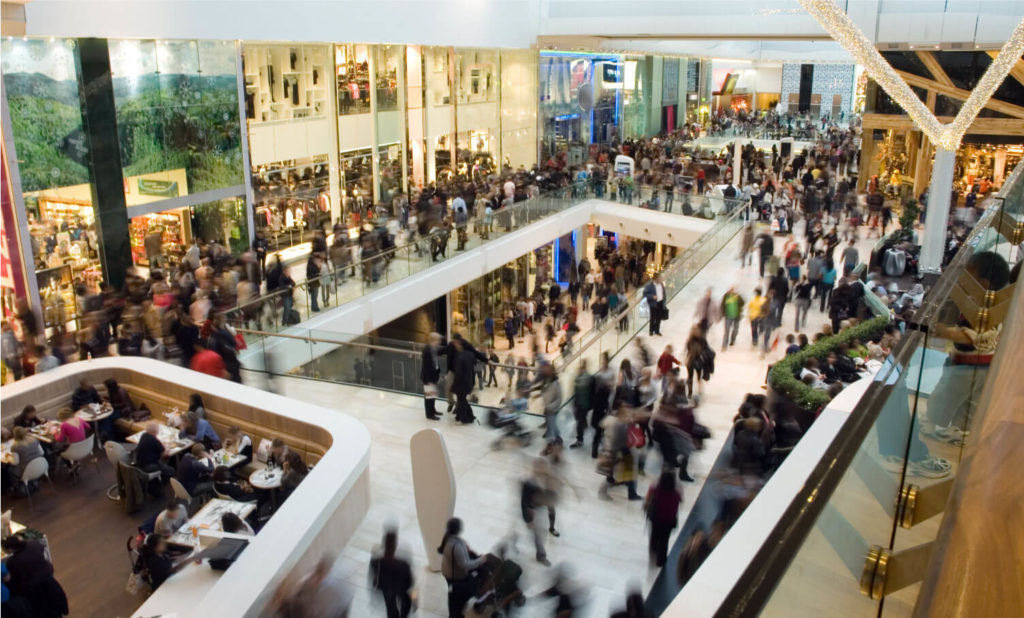
Directional speakers are a type of sound system that can be a solution for noise pollution by directing sound towards a specific area or group of people, rather than scattering it in all directions as most conventional speakers do.
This technology can be used in a variety of settings, such as:
- Indoor public spaces
- Transportation hubs
- Industrial facilities
Basically, anywhere that is necessary to reduce the impact of unwanted noise pollution on the surrounding community.
Sound pollution in retail spaces
Noise pollution is a growing problem in retail shops and supermarkets. It can be caused by continuous advertising announcements, store background music, brand jingles and more. The noise can be distractive for store visitors as well as exhaustive for employees who spend their entire day in sound polluted environments.
Directional speakers are designed to direct sound in a specific direction, rather than spreading it out in all directions, like conventional loudspeakers do. This allows retailers and supermarkets to target the sound to specific areas and act as a viable sound pollution solution to reduce the overall noise level in the environment.
Additionally, directional speakers in retail can emit sound only in dedicated locations, avoiding areas where customers may be looking for peace and quiet. With such technology, it is easier to segment customer zones and create a more unique atmosphere based on the retail setting.
Also, speakers that emit directional sound are often designed to be compact and sleek, making them a discreet addition to the retail environment. The sleek and modern design of most directional speakers, also known as ultrasonic speakers, makes them more discreet and easier to seamlessly install in trade booths, decorations, product stands, and other exhibitions.
Improving public safety communication
Directional speakers can also be used to enhance the safety of a given space, by providing clear and understandable instructions in emergency situations. For example, in a crowded public space where the noise pollution is high, parametric speakers can be used to transfer directions quickly and effectively, which can be crucial in an emergency situation.
Notification announcements can cause an even higher degree of noise pollution as they are emitted in large areas and often provide only general information. With the help of directional sound technology, public announcements can be better controlled and provide more comprehensive information.
For instance, in train stations, sound notifications could be customized per each individual platform and inform passengers about approaching trains and delays more frequently, without disturbing other train station areas.
In the airports, long queues at border checks or boarding gates could be notified by language based on country of departure or arrival, passengers in a national border check line could hear information in their native tongue, while nearby at the international line, announcements could be played in several languages.
With such technology, it can be easier for people to understand speech and safety instructions in noisy environments.
Part of a bigger solution for noise pollution
However, it’s important to note that directional speakers is not the ultimate and singular solution to all noise pollution problems, and should be used in conjunction with other strategies such as insulation, sound-absorbing materials, and zoning regulations.
Furthermore, the quality of sound varies depending on the quality of the speakers and the design of the installation, which is why professional assessment and installation are important to obtain the best results.
Speakers that emit sound in a narrow beam of sound are a powerful tool that can definitely serve as a solution for noise pollution in a variety of settings. They can be precisely aimed and confined to a designated target radius where required, creating a more pleasant acoustic environment and enhancing safety in emergency situations.
In conclusion, noise pollution is a serious issue that affects the health and well-being of people all over the world. There are many ways to reduce noise pollution, including using directional speakers, implementing noise ordinances, and educating people about the effects of noise pollution.
By taking steps to implement noise pollution solutions, we can all enjoy a quieter, healthier and more pleasant environment. Remember that the solution to sound pollution is a shared responsibility, so let’s all be mindful of the noise we generate and take action to reduce it whenever possible.
If you are keen to not only gain the unique benefits directional sound elicit, but to reduce noise pollution, then discover our range of different sized speakers here.
If you have any questions then please do not hesitate to contact us.

